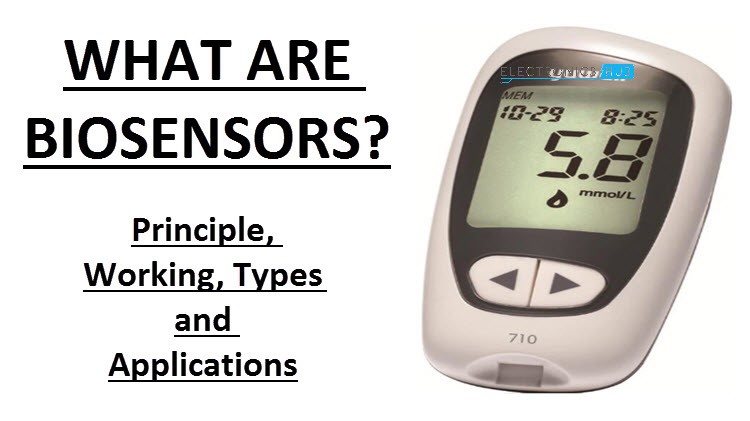Whether you’re a scientist looking for a new research topic or a hobbyist trying to figure out how to make a homemade biosensor, there are a number of different options to consider. Read on to learn more about the different options for biosensors, including glucometers, chemical canaries, immunosensors, and more.
Synthetic ligands
Biological biosensors are an important part of synthetic biology applications. They are used for drug screening, metabolic engineering, and environmental detection. A biosensor is a protein or nucleic acid that has the ability to recognize and react to an analyte. Typically, these proteins contain a transcriptional activator domain and a ligand-binding domain.
The functional properties of biosensors depend on their expression levels. In particular, the amount of protein that is present at any given time affects the biosensor’s ability to activate regulated genes. Optimising gene expression can therefore increase the biosensor’s dynamic range, or range of analyte concentrations that can be detected.
A number of biosensors have been engineered to function by a mechanism called ligand-dependent stabilisation. These proteins contain a ligand-binding domain that interacts with an immobilised element. The interaction is detected by a transducer element that produces a readout signal. These systems are highly selective, allowing them to respond only to compounds that are closely related to the original ligand Health Tracking Devices.
Single-component bacterial biosensors have been developed using a similar mechanism. These systems use a transmembrane protein that can be dimerized with an additional enzyme. During dimerization, the sensor protein’s effector domain becomes activated. This leads to increased phosphorylation of the response regulator protein, which stimulates the expression of regulated genes.
Recently, researchers have also engineered proteins that fluoresce at different wavelengths. These proteins can be combined with fluorescence-activated cell sorting methods.
Resonant mirrors
Optical biosensors are optical devices that have the ability to sense the interactions of biomolecules. They are widely used in the scientific community for various applications. These devices can provide information about the structural and behavioral properties of the analyte within a short period of time. They are also useful in the field of food safety.
Resonant mirrors for biosensors are optical sensors that are designed to monitor biological interactions in real time. They can detect changes in refractive index of the analyte in a short distance, within a few hundred nanometers. These sensors are also used for the study of macromolecules and protein binding.
Optical biosensors have been developed for various applications, such as the study of protein-protein, protein-ligand, and protein-antibody interactions. Some of the most popular applications of these devices are in the field of food safety and medical diagnostics.
Biosensors can be categorized into two types: label-free and dual polarization interferometer (DPI). Both of these sensors are used to study the interactions of biological molecules. They are also used for high throughput screening. However, there are limitations to their penetration depth. Therefore, there are limitations to the accuracy of their results. These devices require careful design to ensure maximum interaction between the biological matter and the electromagnetic field.
A Resonant Mirror (RM) is an optical sensor that uses an evanescent wave to probe changes in refractive index. This is an extension of Surface Plasmon Resonance (SPR) sensors, which are characterized by the presence of a waveguide. An RM’s waveguide structure allows for transverse electric resonance. This resonance is triggered when the angle of the incident light matches the resonant modes of the high-index layer of the sensor.
Oprodes
Several researchers in the field of biotechnology have recently developed new methods to produce biosensors from ligand-binding domains (LBDs). This method facilitates rapid development of biosensors and can be adapted for different eukaryotic cell types.
Biosensors are used to detect chemical compounds in the form of optical or electrical signals. They are also useful for signaling analysis. They have been incorporated into wearable devices for substance abuse treatment, as well as pain management. The potential applications are extensive.
Biosensors can detect chemical compounds, such as sugars, alcohols, and phenols. They can also regulate CRISPR activity in mammalian cells. They are also useful for single-cell analyses of biological processes. These technologies have been developed for applications in a wide range of eukaryotic cell types, including yeast, bacteria, and human cells. They are also being tested on plants for long-term environmental sensors.
The biosensors are produced by covalently attaching a biomolecule to a sensor surface. The resulting device is more stable, making it possible to use it over a longer period of time.
The most common technique used to produce a reliable assay is to bind a small molecule to the sensor surface. The covalently attached molecule can then be measured using an amperometric biosensor. Another technique, called differential measurement, involves measuring the difference between two sensors that carry different enzymes.
Biosensors have become a popular diagnostic technique. They can detect chemical compounds in real time. Biosensors can also be used in substance abuse treatment to determine whether a patient is abusing opioids. They can be used to identify the level of tolerance of opioids and predict how long the user may be abusing them.
Glucometers
Glucose sensor devices are becoming increasingly important in the field of medical research and diagnosis. They are used for real-time monitoring of glucose levels, as well as for testing samples released into the environment. Glucose sensors are designed as two-electrode systems that record current in response to changes in the concentration of glucose.
Glucose sensor devices are sensitive to glucose densities ranging from 5 to 35 mM. However, these devices cannot accurately monitor high glucose levels.
To test glucose sensor stability, the device was tested at various pH values and environments. It was found that the device could be operated at pH 6 to 9. It was also found that the time for quantification could be determined after the uniform H2O2 concentration was applied to the sensor.
In addition to glucose, other molecules such as albumin were also detected. Albumin is a well-established biomarker for the early detection of diabetic nephropathy. It is also used to detect residual pharmaceuticals in wastewater. It was found that the measurement results of the ETC device correlated well with blood test results and clinically approved glucometer results.
The biosensing device was designed as a two-electrode system with a nanometer gold electrode as a working electrode. A Prussian blue (PB) transducer layer was electrochemically deposited onto the nanometer gold electrode. It was then treated with UV ozone for 10 minutes. It was then dried and stored at 4 degC.
Immunosensors
Biological sensors, also called optogenetic sensors, are designed to detect a specific analyte. They usually consist of a biological component (usually a derivative of an antibody) and a transducer. The transducer converts the reaction of the antibody-antigen complex into an electrochemical signal that can be measured. These devices can be applied in a variety of applications, including the pharmaceutical industry.
Electrochemical immunosensors are attractive to researchers because they have high sensitivity and low cost. In addition, they are simple to use and can be easily digitized. They are also suitable for point-of-care analysis.
Biological biosensors are usually designed with genetically modified native proteins. In addition, nanomaterials can be used to improve the interaction between biomolecules and transducers. Metal nanoparticles can increase the conductivity of a transducer and provide improved signal amplification. They are also able to increase the specificity of the immunosensor.
Electrochemical immunosensors are able to detect and quantify several target analytes. They are also suitable for high throughput screening. They can be used in the pharmaceutical industry to monitor quality control measures. They can also be used for candidate drug screening.
Biological sensors have been used in food analysis since the mid-nineties. A variety of strategies have been used to fabricate immunosensors. Some have used nanoparticles to improve the immunosensor’s sensitivity. Others have used carbonaceous materials to enhance the transducer’s specificity.
Electrochemical immunosensors can detect bacteria that are commonly found in foods. They also detect prostate specific antigen (PSA) and estrogen receptor alpha (ERA).
Chemical canaries
Earlier miners used chemical canaries as sensors in the mines. These canaries have high sensitivities to certain chemicals, including methane and sarin. They also provide a visual functional alarm.
A biosensor is a device that monitors the response of biological cells and converts it into an electrical signal. Biosensors can be used for a number of applications, including pathogen detection, biochips, environmental monitoring, and food processing.
Biological sensors are designed with a transducer that responds to the presence of a compound. The transducer converts the mechanical vibrations of the detecting molecules into an electrical signal. The response of the biosensor is dependent on the minimum amount of analyte needed.
Biosensors can also be used to detect pollutants and natural toxins. They are also used for research purposes. These devices can be found in biochips, optodes, and resonant mirrors. These devices are also known as immunosensors, glucometers, and chemical canaries.
Biosensors can be made of a variety of materials, including nanomechanical, thermal, and optical. Some of the common sensors used in bioassays of aquatic samples include protozoans, earthworms, fathead minnows, and bluegill fish.
The biosensors industry is a competitive field. Some of the key players in the market include DuPont de Nemours Inc., Siemens AG, PHC Holdings Corporation, and LifeScan Inc. Others include AgaMatrix Inc., Nova Biomedical Corporation, and PHC Holdings Corporation.
Optical biosensors are less expensive than thermal biosensors. They are also more sensitive and have high specificity. LC sensors have been used to detect double-stranded DNA fragments on solid surfaces and to identify bacteria.


